Done with the weapons in the previous posting, it's time to move on to the actual model of MG Sinanju Ver. Ka. ^^
Since it's a Master Grade kit, with a full inner frame featuring quite a bit of my own extra effort to enhance the different components' details, ^^ the work on the kit's inner frame will be separated from its armors. ^^
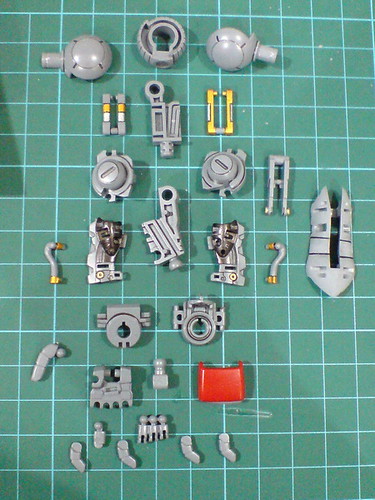
Inner frame parts for the right arm.
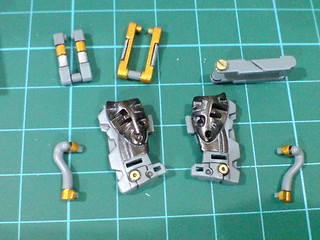
Gun Metal, gold, and silver details painted in Parts 9, and 10. The gray panel lines on the forearm parts were added in Part 17.
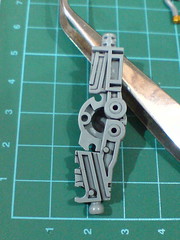
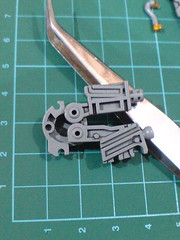
Simple, standard design for the elbow hinges, before the elbow cover and hydraulic pipes are added.
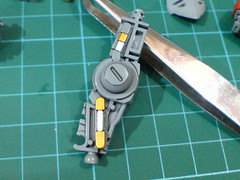
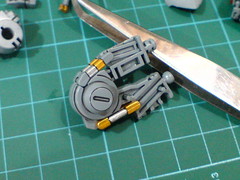
Simple sliding gimmick for the hydraulic pipes when the bicep or forearm is bent.
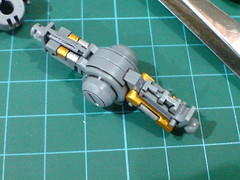
Rear view of the arm.
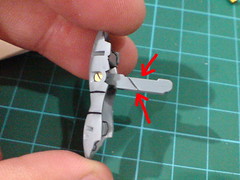
The gap above the forearm cover's hinge arm is an important marker of which side is supposed to be upward-facing. ^^

Separable components of the right arm before the final assembly.
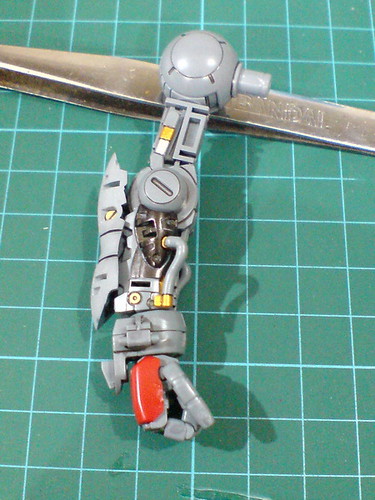
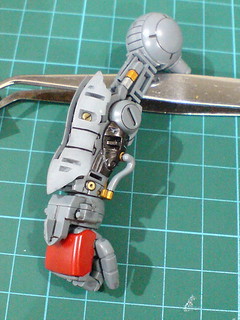
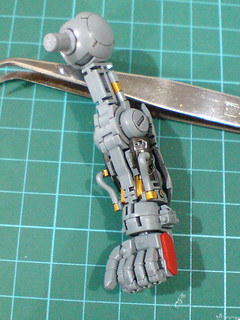
Done for the right arm.
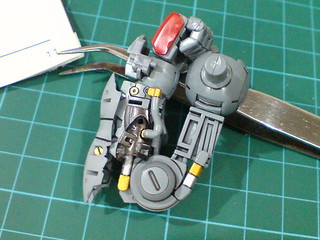
Full 90-degree hinges for the bicep, and forearm at elbow level respectively, although this has already been shown earlier on. ^^
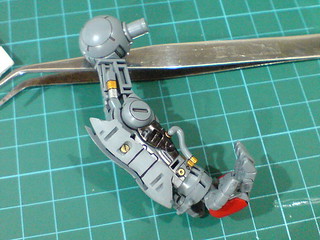
Standard hinge of the wrist joint allows the hand to be flipped inward/outward. The bicep can swivel around the shoulder as well.
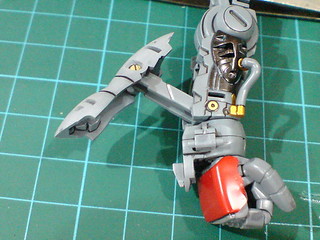
The forearm cover can be expanded to the front.
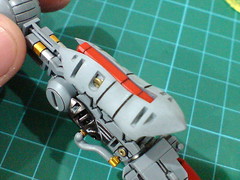
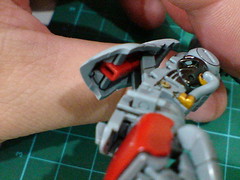
The beam saber handle can be stored inside the forearm cover.
Without any special tab or peg to secure it to the component, the beam saber handle is being held in place purely by friction.
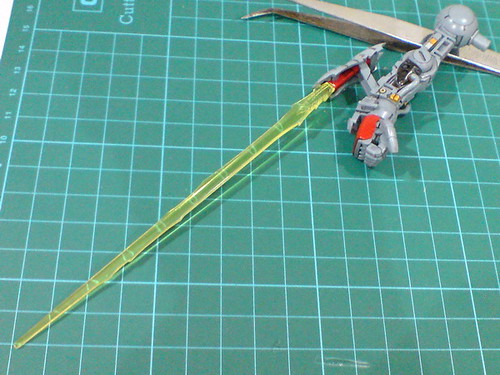
With the beam saber part attached.
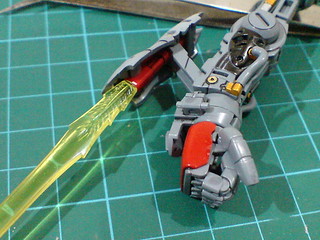
Since it's not a heavy part by any mean, the hinge arm is well capable of supporting the mounted beam saber.
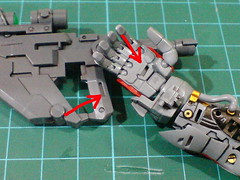

Typical tab and slit pair to secure the beam rifle's handle to the palm area.
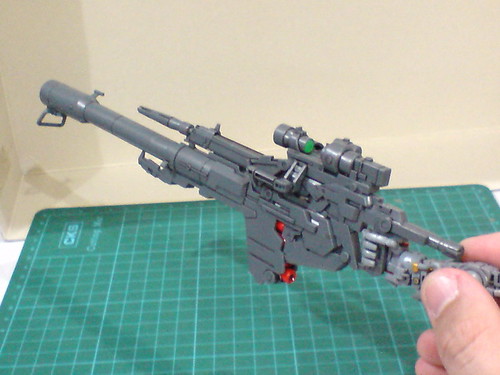
The tab and slit pair is strong enough to securely hold the bazooka-equipped combined rifle. ^^
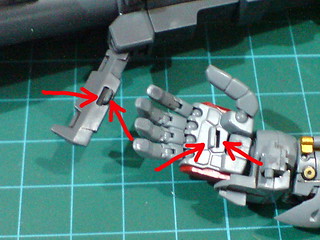
The rocket bazooka's own main handle has its own set of tab and slit to connect it to the palm.
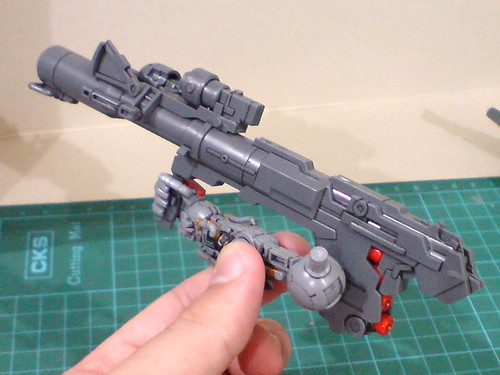
To accommodate the large protruding magazine part, the shoulder armor (obviously not available yet) can provide some extra support for the hand in holding the bazooka. ^^
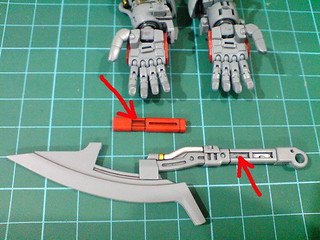
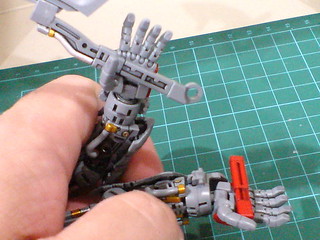
While their design may be different, the beam ax/sword, and beam saber tab to the palm area the same way as the beam rifle does.
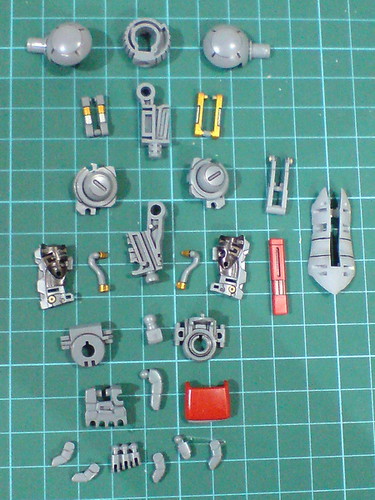
Inner frame parts for the left arm.

Separable components of the left arm before the final assembly.
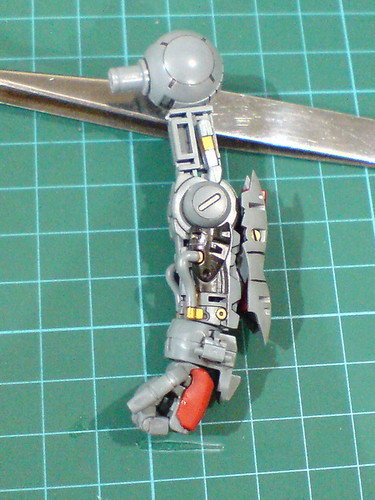
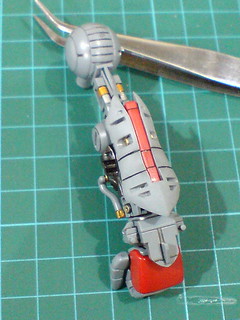
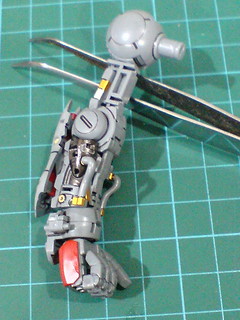
Done for the left arm.

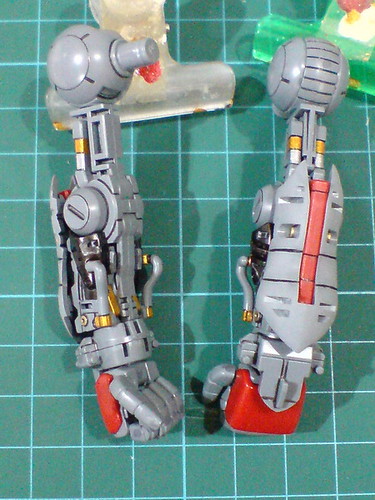
Both arms are now completed.
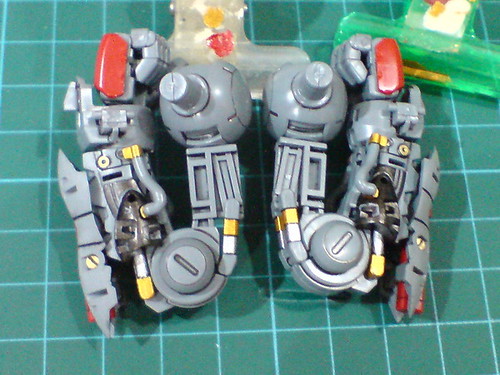
Another look at the elbow bend.
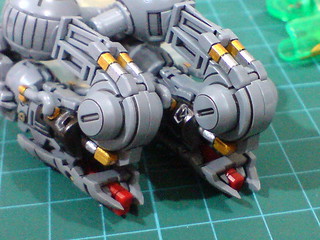
The combination of gold and silver from the hydraulic pipes, and red from the stored beam sabers forms a unique image behind the elbow joints when they are bent. ^^
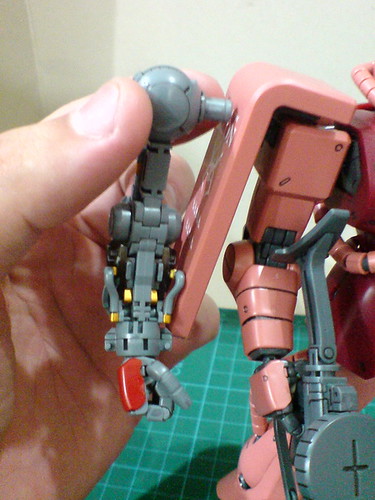
A very rough comparison between the right arm's inner frame with its completed counterpart on MG Char's Customized Zaku II Ver. 2.0.
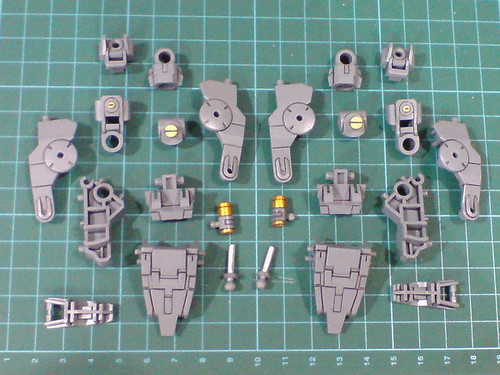
Inner frame parts for the feet.
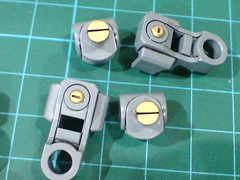
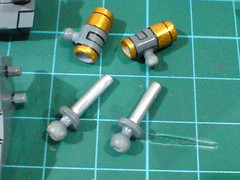
(Left) The details on the peg joints were done in Part 16.
(Right) The heel hydraulic pipes were painted in Parts 9, and 12.

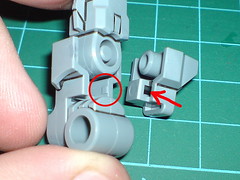
(Left) Four interlocking ABS parts to form a single ankle joint.
(Right) A tiny square tab behind the front ankle part, which is almost invisible unless one examines the part in close scrutiny, secures the part to the back piece. Given how tough the connection is between the parts, I wonder if that tab and slot pair is actually necessarily. ^^
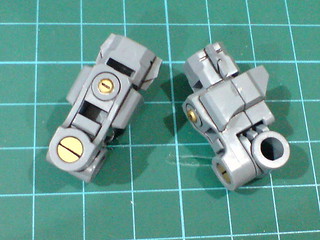
The completed ankle joints.
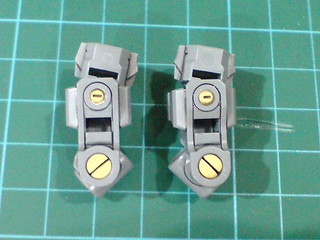
Two out of four articulation points enabled by the ankle joints: side-to-side hinges for the upper leg, and foot.
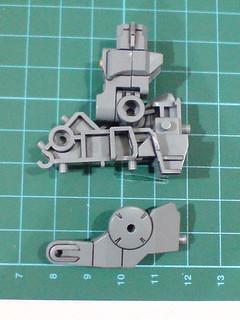
Assembling one ankle joint onto the main foot part.
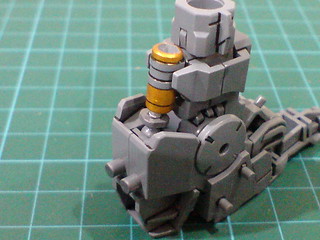
Ball-type joints connect the two hydraulic pipe parts to the heel.
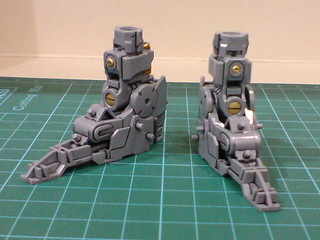
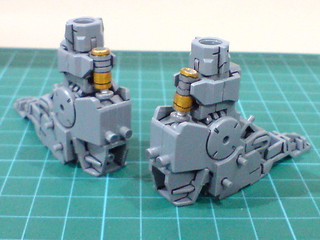
Done for the inner frame components of the two feet.
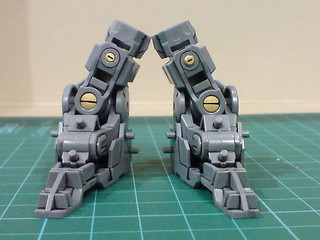
Side-to-side hinge action of the ankle joint.

While the ankle joint does provide forward/backward hinge for each foot (articulation point no. 3), the range is very limited. However, the foot has two hinging points on its own that allows it to be bent for a much wider range, more than it really needs in my opinion. ^^ Then again, that bend is limited to forward only.
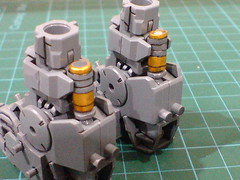
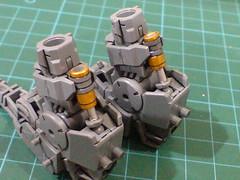

The heel hydraulic pipe's movement is linked to that of the ankle.
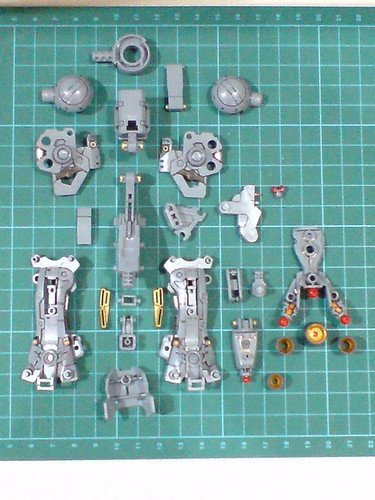
Inner frame parts for the right leg, together with a completed foot.
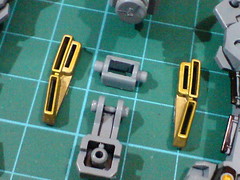
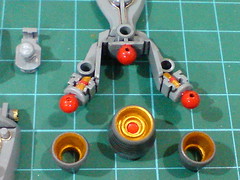
Painted and detailed inner frame parts: vent parts (Parts 2, 3, 4, 5, and 6, then refined in Part 19), thrusters (Parts 8 - gold, 10 - red), ...

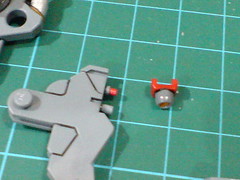
... chain detailing (Part 11), knee vent (Parts 14 - gray, 15 - red), ...
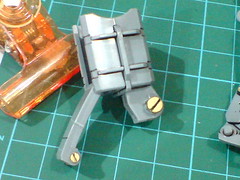
... and knee hinge surfaces (Part 16).

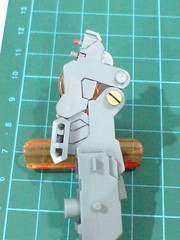
Simple linked movement gimmick for the knee.
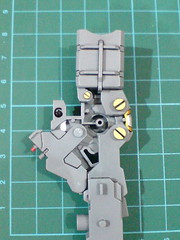
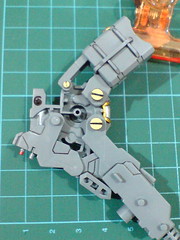

The simple linked movement gimmick of the knee is made more complicated when it's connected to the knee joint part, along with the thigh.
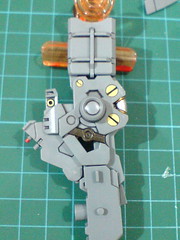
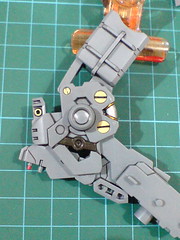
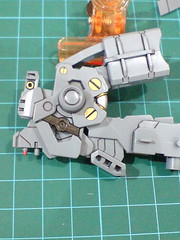
Besides the sliding and moving parts, the line details on the knee hinge surfaces that "turns" when the knee is being bent are also very interesting to look at. ^^
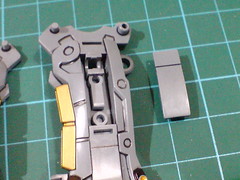
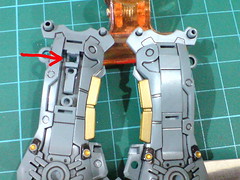
As the two large parts for each leg are identical to one another, a small plate is included to cover up one of the joint bases that will not be used to mount the side thruster.
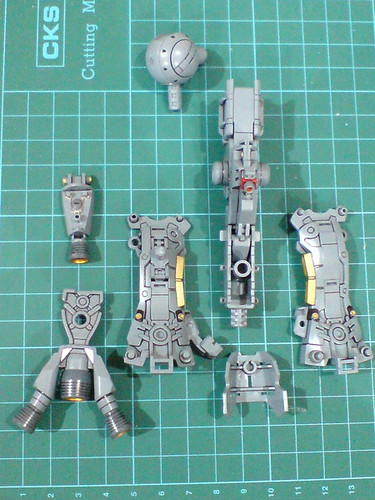
Major components of the right leg's inner frame before the final assembly, without the foot.
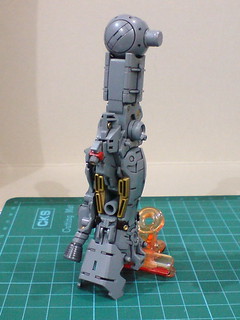

Done for the inner frame.
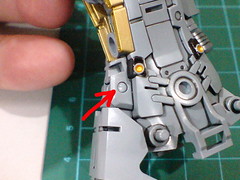
Despite all the attention to details, there's a pair of hinge surfaces I missed out on painting: the pair that allows the ankle guard to be hinged upward. ^^;
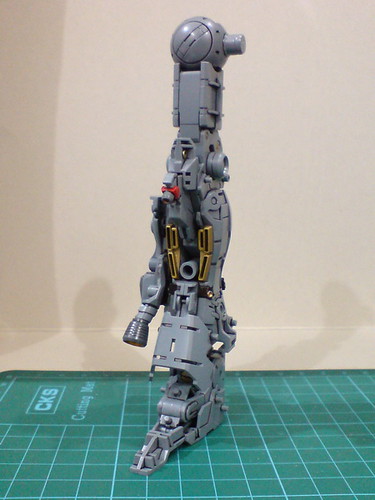

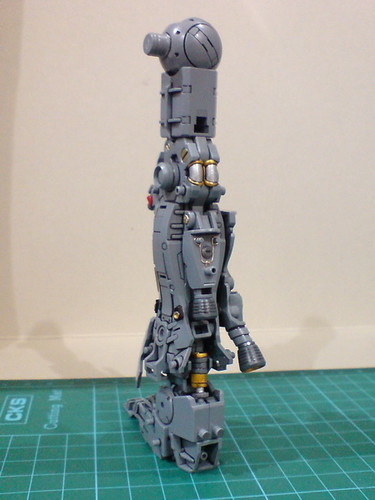
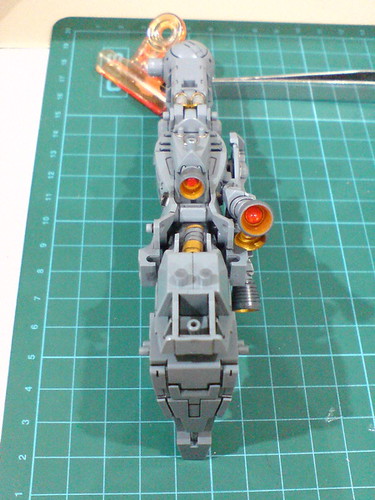
With the foot connected, the right leg's inner frame is completed.

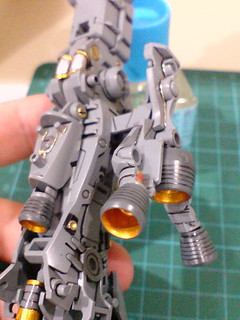
The side thruster's expansion gimmick works almost identically to that of the forearm cover.
Their hinge arms look similar too, although the part used by the side thruster is much bigger. ^^
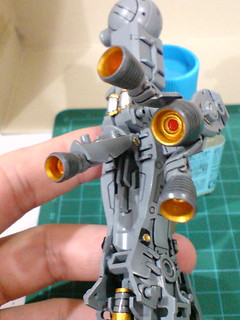
Besides the swivelling of the side thruster, the upward hinging of the calf thruster is shown in the image above as well.
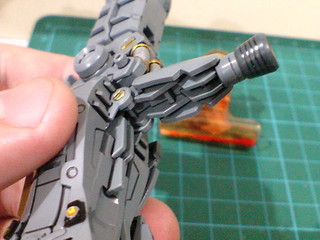
An elaborate set of tabs and slots are used to hold the calf thruster to the leg when it's retracted, but such "security" isn't exactly necessary I believe, as the tough hinge joint is enough to keep the component in place. The tabs do look pretty good as extra details behind the leg when the calf thruster is expanded though. ^^
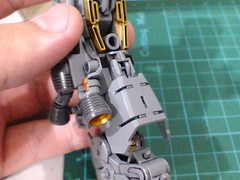
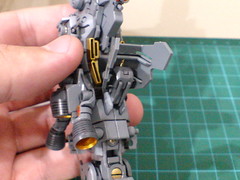
Very wide upward hinge for the ankle guard.
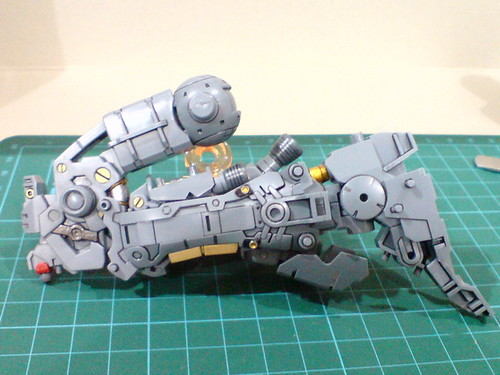
Another look at the knee bend, this time on a complete leg. ^^
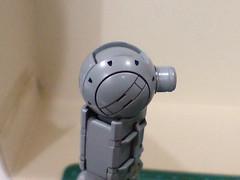
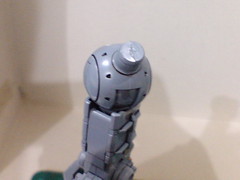
Separate hip joint that swivel around on top the thigh, and can be hinged upward as well.
In actuality, the thigh swivels around the hips, while the aforementioned hinge allows the leg to be expanded outward. The large peg also allows the leg to be bent forward/backward.
For those who are keeping count, only three articulation points are listed for the ankle joint. ^^; The last point is the ability of the foot to swivel around the leg via the straight peg the latter uses to connect to the ankle joint. Due to the tight space inside the leg frame, that articulation range of that point is the lowest among the four. ^^; Then again, with the thigh swivel, another swivelling point for the foot isn't exactly too important to keep I think.
Will move on to the left leg, waist, and shoulder armors next. ^^




No comments:
Post a Comment